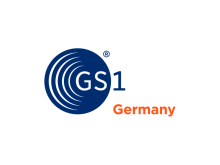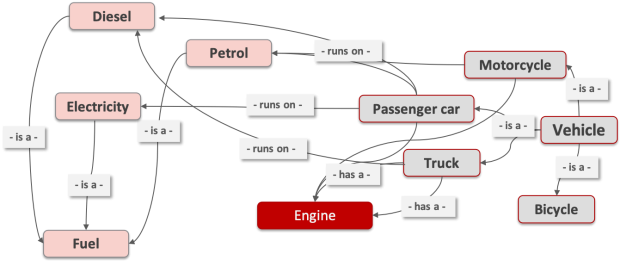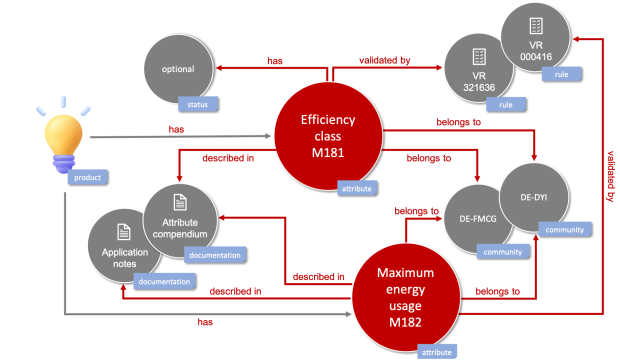Knowledge graphs for product knowledge and technical documentation
Link knowledge and make your content smart
We develop knowledge graphs for product knowledge and technical documentation.
Knowledge graphs graphs connect information and harmonize knowledge across the company. They help break down data silos because, in many companies, information is generated in different departments. For example, technical communicators write product documentation; product development creates source code, technical data, and design data; master data managers maintain product data; the service team writes service reports; and the marketing team compiles information for the website.
Often, this information is spread across different systems. Linking this information between departments is challenging.

Unlock the value of your data with a knowledge graph
A knowledge graph consolidates information from multiple data silos and creates cross-functional value:
- Links, processes, and centrally manages information from various systems, giving you a 360-degree view of your products and services.
- Enables targeted insights, for example, on the use of product components or the carbon footprint of your products.
- Makes content flexibly available across different applications (touchpoints) and target groups, such as chatbots or self-service portals.
- Lays the technical foundation for a company-wide product and metadata model, ensuring consistent information across all channels.
We work with you to design and implement knowledge graphs tailored to your product information and enterprise content This is how we work.
Your contacts
Knowledge graphs
Developing knowledge graphs. This is how we work
- Analyze systems and formats. We analyze your product information and documentation systems and formats. We also interview your subject matter experts. Together with you, we define the goals that you can achieve with a knowledge graph.
- Model knowledge. We create custom knowledge models, for example, for technical documentation and your company’s products.
- Select systems. We research and evaluate suitable graph database solutions and vendors.
- Implement systems and migrate data. We help you implement the knowledge graph, integrate the data sources, and connect the touchpoints that will retrieve information from the graph.
- Provide training. We train your information architects in maintaining the knowledge models.
Learn more about knowledge graphs in our FAQs.
FAQs – Frequently asked questions about knowledge graphs
What is a knowledge graph??
A knowledge graph is a structured representation of knowledge, organizing information into nodes (entities) and edges (relationships). Knowledge graphs make knowledge machine-readable and reveal connections between different pieces of information.
Knowledge graphs can be stored in graph databases, which are specifically designed to represent and store highly interconnected information. Large search engines, for example, use knowledge graphs to determine their results, collecting and organizing information from a variety of sources.
The terms and relationships in the graph can be formally defined using one or more ontologies that map the domain knowledge of the respective field. Ontologies exist for various domains, including medicine, web content, industry, and technical documentation.
How do organizations use knowledge graphs?
Organizations can use knowledge graphs to link data and content from various groups and data silos, including product data and spare parts information, technical documentation, and marketing materials. How does it work? Content and metadata that multiple applications need to use or access are imported into the knowledge graph and linked together. This approach helps in several scenarios:
- Provide and maintain up-to-date reusable information and content for multiple systems, for example, technical data for the CCMS
- Collect knowledge from different applications, such as service cases and product information for targeted analysis
- Develop and manage a metadata model that applies to the entire company
- Map data and metadata from different sources
- Enrich content by adding information, including automatic tagging or metadata-based classification
- Deliver content and metadata to touchpoints such as websites, chatbots, and self-service portals
- Enable additional features, such as recommendations and product configurators.
Knowledge graphs can easily integrate into pre-existing IT architectures and, due to their network structure, can be gradually extended with further knowledge models.
How can knowledge graphs be used in technical communication?
In technical documentation, we use knowledge graphs to connect documentation content with data from other systems, such as product data. For example, information about product variants from SAP or a PIM database can be linked to the documentation via a knowledge graph. This eliminates the need to duplicate information for variant management.
The following example shows a product property, the efficiency class of light bulbs, which is described in several documents and is related to other product properties and test rules.
What is an ontology?
An ontology is a formalized definition of the concepts of a specific domain and their relationships. Objects in the domain are classified according to their properties. Between the objects, certain typed relationships can exist. The relationships between objects are semantic statements. Here is an example:
- Berlin – is the capital of – Germany.
- Berlin belongs to the class "city", Germany to the class "country". The relation is formed by the statement "is the capital of".
Ontologies allow knowledge to be captured in an explicit and formalized way.
What is the difference between an ontology, a knowledge model, and a knowledge graph?
- An ontology is a formal model that describes a domain with classes, relations, and rules. For example, "A product has a component."
- A knowledge model is a higher-level, often conceptual term. It describes how knowledge is structured as a whole and usually involves several ontologies.
- A knowledge graph is the technical implementation of a knowledge model with concrete data. It contains specific examples, such as "product A" and "component B," and is based on the structures defined in the knowledge model or ontologies.









